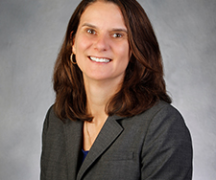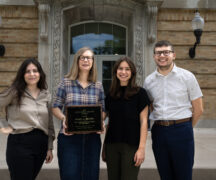By DAVID DUPONT
BG Independent News
When the pandemic turn household arrangements topsy turvy, the burden caused by that disruption fell most heavily on women.
That shouldn’t come as a surprise. It was a result of social arrangements in place before the coronavirus started to spread and that will remain once society returns to normal.
That was the conclusion reached by Jessica McCrory Calarco, a professor of sociology from Indiana University. Calarco spoke at a virtual symposia “COVID-19 and Families,” hosted earlier this month by the Center for Family & Demographic Research at Bowling Green State University.
Calarco has been studying families and education, so she was able to shift her scholarly gaze to how the pandemic was affecting them. With schools and day cares closed, and many parents working from home, if they had jobs, the burdens increased.
While men did more in terms of child care, the burden fell disproportionately on women who were already doing more, she said.
Calarco backed this up, not only with numbers, but with the stories shared with her by mothers and fathers she’d been interviewing for previous studies.
Mothers already were doing more of the household chores and childcare, so even when men did more, there was simply more to do.
Mothers who work outside the home, she said, tend to earn less and many work part-time. That reflected the “gendered structure” of the workplace and the “longstanding inequities in the structure of paid work”.
During the pandemic the decision was made to protect the husband’s position as the primary bread winner, even when that meant the mother ended up doing less paid work, or even leaving the workforce.
Given the uneven impact on various sectors, women disproportionately lost their jobs. In other cases, the mother had a position that allowed her to work from home, while the father worked in construction or another sector where they worked outside the home.
In cases where women earned more than men, they were more likely to have jobs that enabled them to work from home.
Yet even when the father was home, problems arose.
Calarco spoke of family where the father was unemployed, and the mother had a demanding job. That seemed like it would work out, except the father couldn’t manage the pandemic schedule of keeping up with the kids school work and making them listen. He grew frustrated because he couldn’t get the kids to listen. The mother had to step in.
Children weren’t used to having their mothers at home, but not available to help them.
“I think working from home is very difficult,” one woman reported to Calarco. “I hear screaming in the next room and it’s hard for me not to respond.”
If they don’t respond, guilt sets in. Mothers “often ran up into these structural cultural barriers,” Calarco said.
And when fathers were at home working, children didn’t understand that they weren’t available to play. So mothers had to keep them at bay, so the father could work.
These conflicts in the home take a toll on couples’ relationships, she said. And she has concerns about some of the families she studied. “A lot of anger and frustration came out in the interviews.”
Rachel Margolis, from the University of Western Ontario, remarked during the question and answer session that while divorces have declined during the pandemic, divorce lawyers report getting more inquiries.
These are problems that can’t be solve by couples alone, Calarco said.
Paid and family leave are needed, not just during a pandemic. Affordable child care is essential for women in the work force.
As schools and child care open up, Calarco said, mothers are torn.
“There’s a lot of shaming of mothers wanting to send kids back,” she said.
Despite the problems at home, they are still concerned about the implications of children going back to school. “It’s still a very difficult decision to make.”



